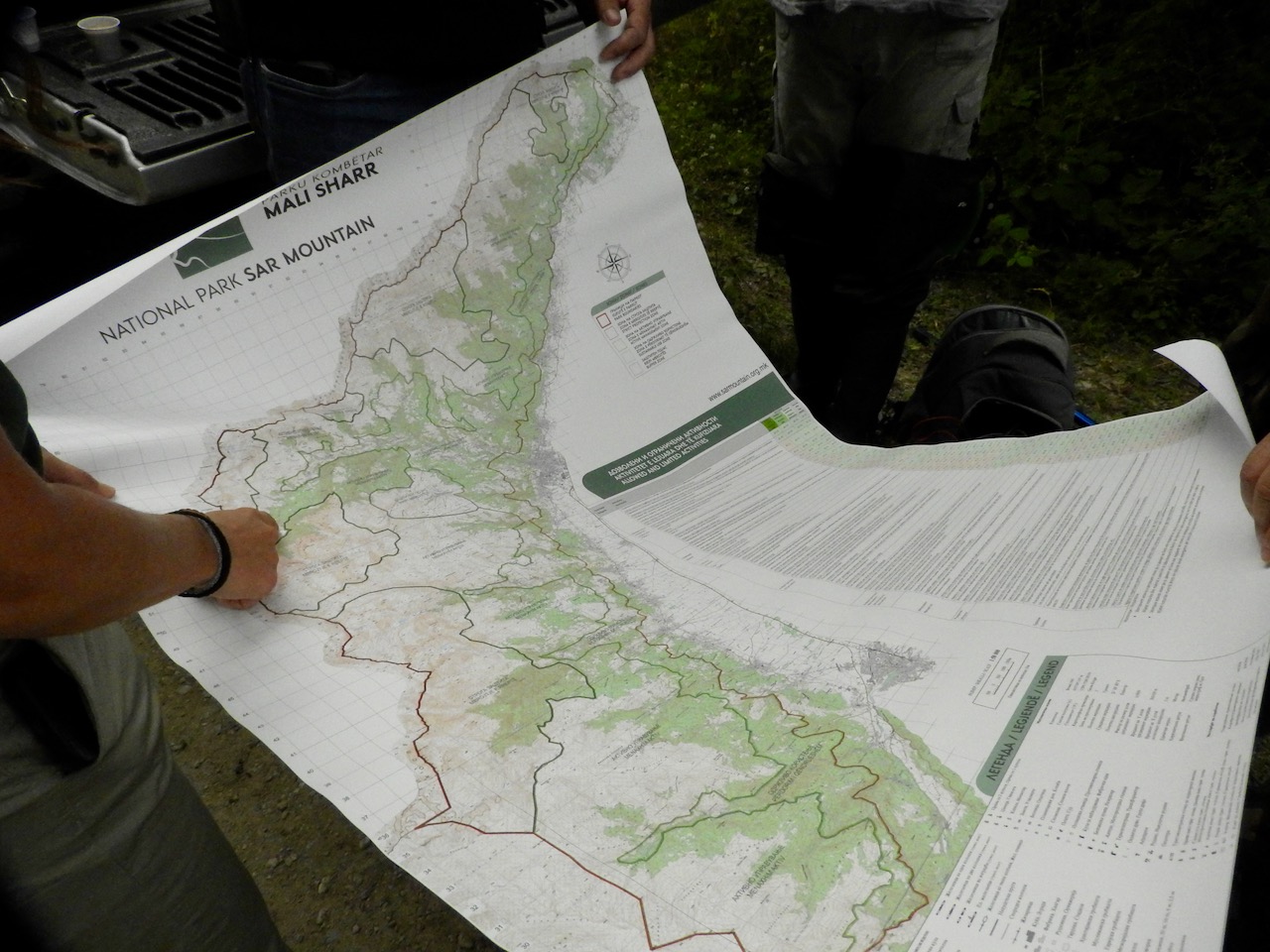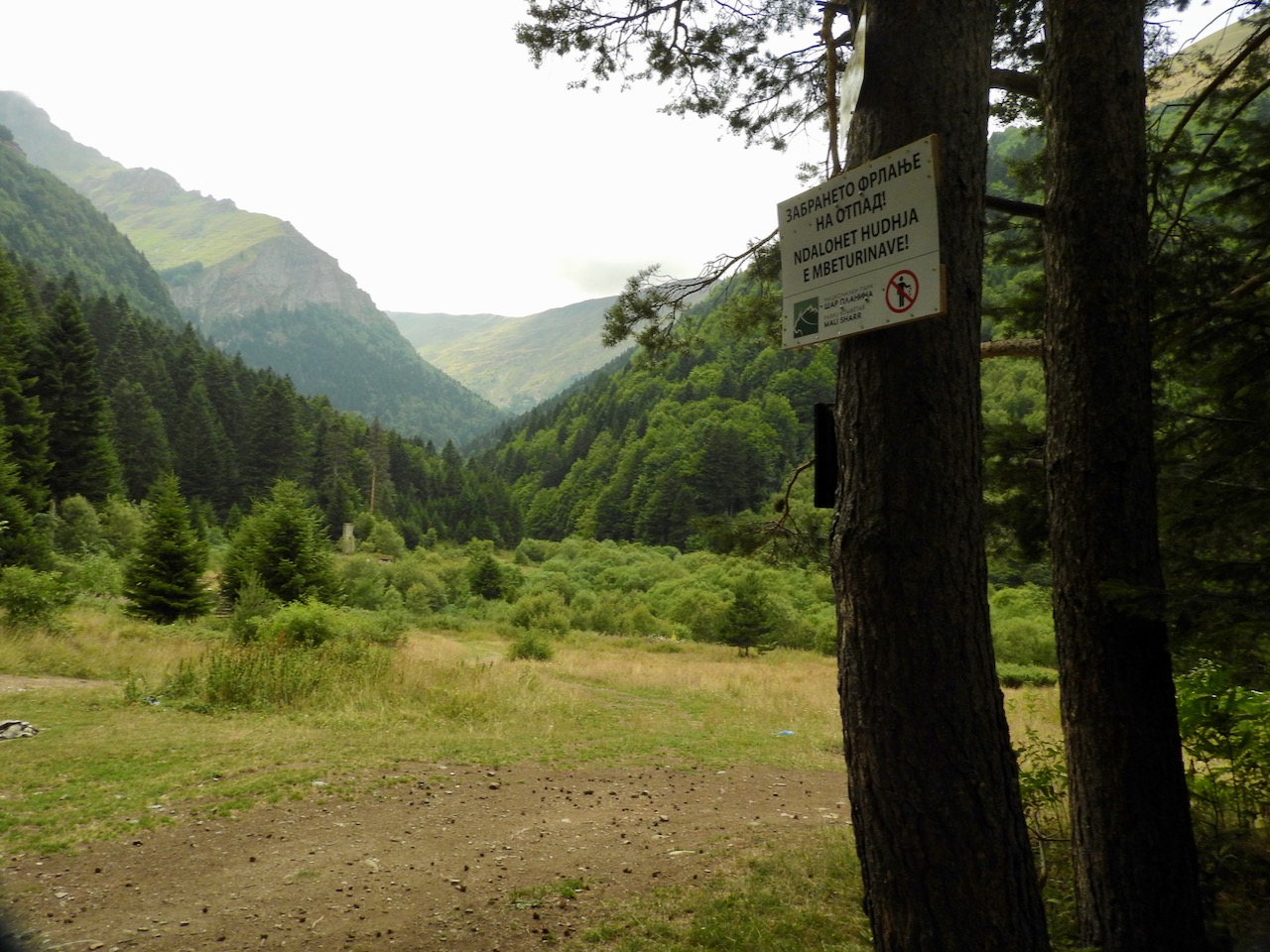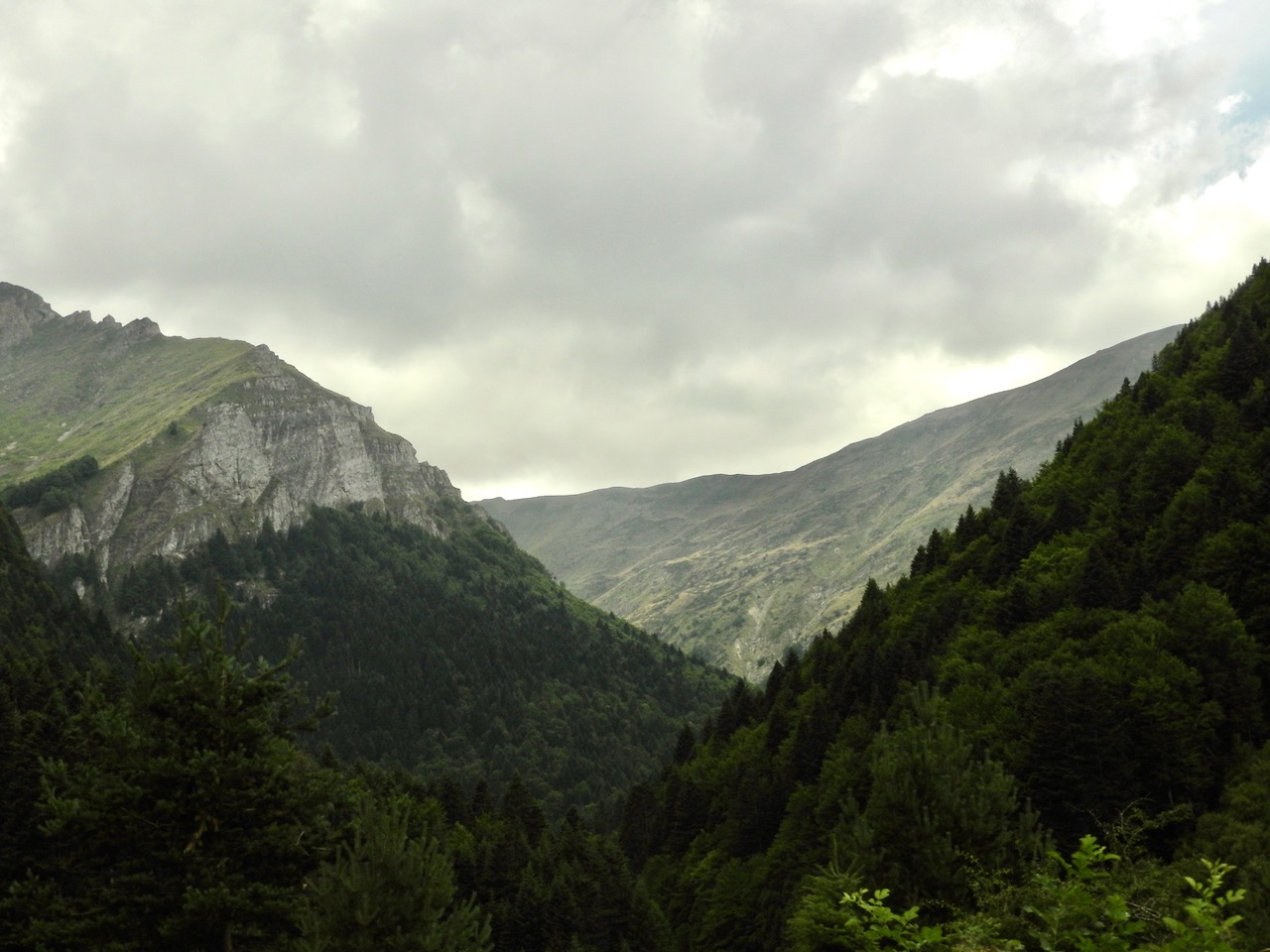
Photo: Marco Ranocchiari/OBCT
North Macedonia’s protected areas are of great ecological importance, but are increasingly exposed to the risk – among others – of fire. While political fragmentation and a shortage of personnel and resources pose considerable challenges, there has been significant progress. A report from the Šar Mountains National Park
“We spent the last Orthodox Christmas in the mountains, fighting fire for three days”. Anela Stavrevska-Panajotova, head of the nature conservation department of the Šar Mountains National Park in North Macedonia, points to a high-altitude spot on the topographical map, far from any population centre. “It takes two hours just to reach the area. Transporting water is Impossible.”
On an unusually rainy summer's day, the mountains were lush with streams, steep pastures at the edge of rock faces and seemingly impenetrable forests. Hard to imagine that even in the depths of winter these mountains could go up in flames. Yet you only have to spend a few hours with Anela's colleagues - park director Ibrahim Dehari, or Milorad Andrijeski, responsible for sustainable forest management - to realise that they face tremendous challenges. “It is still difficult for us to use the land management mechanisms adopted by other European countries,” Anela explains. "The truth is that we are basically improvising."
Self-financing and dependence on international projects
Established in 2021, the Šar Mountains is one of the youngest national parks in Europe. With peaks of over 2,500 metres, glacial lakes, canyons and high-altitude pastures managed in a very traditional way, the park is home to an extraordinary variety of landscapes and very high biodiversity. In addition to bears, wolves and numerous endemic species, it is one of the last refuges of the Balkan lynx, a subspecies of the European lynx, of which only a few dozen specimens survive. Not by chance, the lynx was chosen as the park's symbol.
When it’s finally complete - a complex task that will take many years - Šar should be the final piece in one of Europe's largest cross-border protected areas: over 2,500 square kilometres shared between the Šar Mountains national park on the Kosovan side, the Mavrovo National Park in North Macedonia and the Korab-Koritnik Nature Park in Albania.
Two years after inauguration, however, much of the work remains to be done. "In North Macedonia, as in most neighbouring countries, the state does not support the national parks financially. So we are self-financing," explains Stavrevska-Panajotova. "To create Šar, the institutions have actually allocated a small sum - but only for the first three years, and the third year has already started." A little over 100,000 euro is certainly not enough for a protected area that has been set up from scratch: the vast range of duties include monitoring, research activities, signage, trail maintenance, dialogue with the local population, tourism management, and of course paying the salaries of park employees. And then there is preventing and fighting wildfires.
Much of the financial support received by the park comes from international projects and organisations. "We have three main donors," says Stavrevska-Panajotova. "The Prespa Ohrid Nature Trust, which supports us in the long term, focuses on nature and biodiversity protection. Then with UNEP - the United Nations Environmental Programme - we have a very comprehensive project, which includes landscape protection, tourism enhancement, sustainable pasture management and the implementation of forest management plans. Finally, the US organisation Global Conservation mainly assists us in combating illegal activities such as logging and poaching, and provides us with the boots and winter jackets used by the rangers'.
According to Stavrevska-Panajotova, international organisations typically deal with general issues and rarely focus on problems specific to individual territories, such as forest fires. “We talked with the Secretariat for European Affairs, but they told us that fighting fires is not their priority at the moment. We are now in contact with the US Forest Service, but they mainly support the training of personnel, not the purchase of equipment”.
View on the Šar Mountains (photo: Marco Ranocchiari/OBCT)
Last year, a series of fire drills for the local population took place. However, as Stavrevska-Panajotova explains, “the use of local volunteers - which implies another problem, that of safety - can serve as a stopgap between the outbreak of the fire and the arrival of the rangers. But we only have four firefighting professionals at our disposal, which is completely insufficient. In other words, we are not able to deal with a forest fire in a systematic way”.
Decentralisation is bad for natural areas
Since 2005, partly to counteract the ethnic tensions that erupted during the brief conflict of 2001, North Macedonia has tried to become increasingly decentralised. Such reforms have had repercussions for fire prevention and firefighting - these tasks were assigned to local authorities which had neither the competences nor sufficient funds.
"In the event of a fire, the first responsible party is the competent institution on the ground - that is, where there is one, the parks themselves," comments Bekim Maksuti, head of the North Macedonian Directorate for Protection and Rescue, the government body that deals with all emergencies in the country. "This does not mean that we are not ready to intervene in case of large-scale fires or in places that cannot be reached by land. We are. For less challenging fires, however, [our direct intervention] would not be efficient or logical. We are ready to help parks build their first response system. We already do all we can with joint exercises and the provision of equipment - including Šar Park, with whom we maintain fruitful cooperation”.
There is also a geographical factor which affects the vulnerability of protected areas. The most important protected areas in North Macedonia are located in the mountainous and depopulated lands of the western part of the country. The largest and most dangerous fires are typically concentrated in the eastern region, which is more densely populated and drier in summer. Understandably, this is where the national forces are most engaged. According to Maksuti, “in 2021, a particularly busy year, we had between seven and ten fires per day, with two or three large fires that kept most of the personnel busy for a long time”.
From one side of the border to the other
Most North Macedonian parks and reserves are located close to the border, or are even cross-border. North Macedonia has joined the European Civil Protection Mechanism and is aligning its system for fire prevention and response with that of its neighbours, with whom it increasingly cooperates during major fires. What is still missing, however, is a comprehensive commitment to the coordinated management of protected areas, which should be managed as single ecosystems regardless of borders.
Some good examples can already be found. "If fires occur on either side of the border with Albania, we share information as soon as possible," says Darko Kjitanoski, in charge of managing the protected area of Vevčani, just north of Struga, on behalf of the Eko Svest association. "But these are sporadic initiatives by local communities or NGOs. We are now looking for financial resources to place alarm sensors on both sides of the border”.
The approach of Fireshield is more systematic. This project is part of the European Union's IPA programme, in which two North Macedonian municipalities, Vrapciste and Bogovinje, and one Albanian municipality, Cerrik, have committed to jointly manage fires in their territories. The project covers a wide range of activities, from providing materials to organising joint exercises and awareness-raising activities in schools. As project leader Rubin Nikoloski explains, the two Macedonian municipalities are located on the southern edge of the Šar Mountains, so the park will also benefit.
View on the Šar Mountains (photo: Marco Ranocchiari/OBCT)
Territories in profound transformation
"In 1949, when the Galičica National Park was established, there were more than 30,000 sheep. Now there are maybe around 30” says Andon Bojadzi, head of the park’s conservation department. The park sits on the mountain ridge separating the lakes of Ohrid and Prespa, on the border between North Macedonia and Albania. In addition to reducing the surveillance of the territory, Bojadzi explains, the depopulation of the mountains here and elsewhere in the Balkans is causing profound ecological changes, which are also altering the territory's response to fires: “now there is tall grass everywhere and a lot of juniper bushes have grown, and there burn very well, acting as a natural fuel.”
Yet the effects of these changes remain largely unknown. "The mountain grasslands of Galičica are characterised by a very high biodiversity, even 60-70 species in a small area - but we are in danger of losing it," Bojadzi continues. "One of our studies showed that some key species, such as Sideritis, have actually adapted perfectly to the fires, which occurred on a smaller scale in the past, typically caused by shepherds. Much more scientific research is needed to assess what is happening today. The state should send someone not only to the Balkans but to all the Mediterranean countries that share similar problems'.
Working faster than fire
Over the last two decades, the impact of forest fires in North Macedonia has been fluctuating, with peaks in 2007, 2011-2012, 2019 and 2021 alternating with fairly quiet seasons, such as the summer of 2023. However, indicators say that the risk of fires is increasing, and for years fire has been firmly among the top environmental threats to the country.
In addition to depopulation, the determining factor is the climate crisis, which is lengthening the hot season and making extreme phenomena more frequent. Already weakened by neglect and the planting of unsuitable species, forests are finding themselves more vulnerable to insect and fungal infestations. Added to this is the more or less unrestrained expansion of urban areas such as Skopje, which creates an increasingly tangled and inflammable transition belt between cities and forests.
In the face of these threats, Bekim Maksuti is convinced that, despite the delays, the country is on the right track. "We are doing our part. And we are also preparing for the next step: EU membership. From 2014, for example, we can deploy three Canadairs at the same time. We are also improving with regard to the recruitment of volunteers - a key contribution that has so far, however, remained a sore point, as is typical in former communist countries.
What remains to be proven is that such improvements are proceeding faster than the increasing threat of fire, and that the protected areas of North Macedonia, among the most ecologically important in Europe, are not left behind.
This material is published in the context of the "FIRE-RES" project co-funded by the European Union (EU). The EU is in no way responsible for the information or views expressed within the framework of the project. Responsibility for the contents lies solely with OBC Transeuropa. Go to the FIRE-RES page








